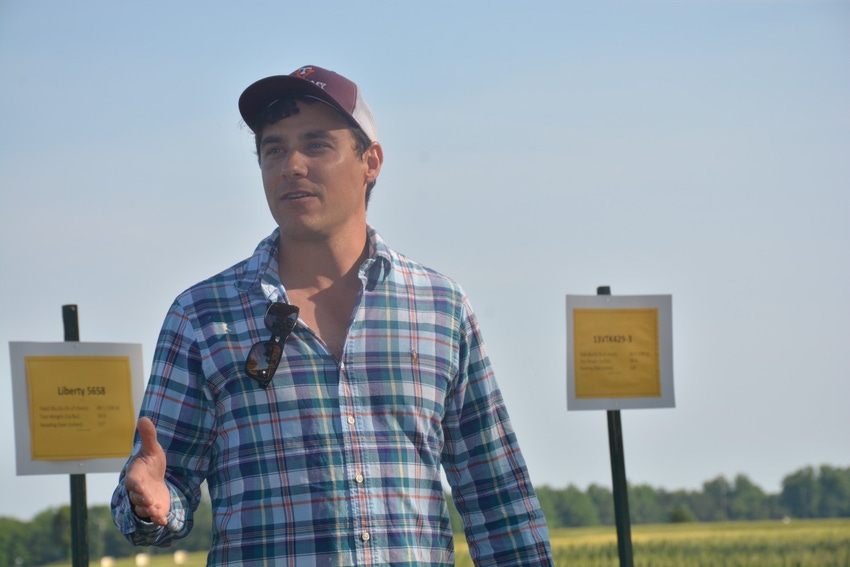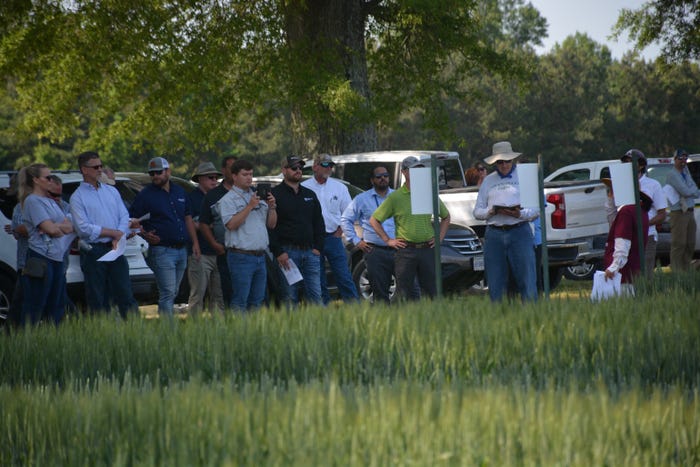
As Virginia Tech’s new small grains breeder, Nicholas Santantonio hopes to expand on the successes built by long-term Virginia Tech breeder Carl Griffey who retired to his native Tennessee in January.
“Carl built one of the most successful small grain breeding programs in the country. It was his baby that he nurtured seven days a week. I am honored to take over and continue the great program that he built,” Santantonio said.
Griffey was the small grains breeder at Virginia Tech for 31 years and is considered one of the best at his trade in the eastern United States. Virginia Tech’s small grains breeding program is regarded as one of the few highly regarded breeding programs in the country. Griffey and his team have released 107 wheat and barley varieties since 1990 that have grown across the eastern states.
Santantonio comes to Virginia Tech with a bachelor’s and master’s degree from New Mexico State University in genetics and plant and environmental science and a Ph.D. from Cornell University in plant breeding and genetics. He has worked in several public breeding programs, including alfalfa breeding at New Mexico State and small grains breeding at Cornell.
Santantonio is integrating genomic selection and high-throughput phenotyping with the goal of introducing new wheat and barley varieties at a faster pace. At the Virginia Small Grains Field Day at the Eastern Virginia Agricultural Research and Extension Center in Warsaw May 20, Santantonio stressed that creating better methods, predictive models and technology to accelerate genetic gains and bring improved small grains varieties to the market is critical.
Climate challenges
“The biggest challenge we have right now is that the climate appears to be more variable from year to year. We’ve had a lot of variation, so we want to start breeding [for] stability in our varieties,” Santantonio told the field day crowd.
He noted that plasticity in breeding allows you to be stable across different environments so varieties can handle different kinds of stress. At the field day, he highlighted a research project at Virginia Tech that is funded by a $1.6 million collaborative grant from the Foundation for Food and Agriculture. That grant is allowing Virginia Tech to utilize information from growth traits in season to make better breeding decisions, especially under varying climates.
“The goal of this project is to monitor traits through time. Most plant breeding programs have had a tough time measuring things through time. Most of what we do is all measured at the [end of the season]. We wait until they are all mature, we come in, we take their heights, we drive a combine through here, we weigh the grain, we get the moisture, we get the test weight and then we can say something about those different varieties out in the field,” Santantonio explained.
“Now that there is technology such as drones, we have the ability to easily collect data at multiple time points. We can come out here for half an hour or 45 minutes, fly the drone, collect aerial imagery, and make the computer do all the work. Then we can start getting information about how lines grow and develop,” he said.
The goal of the research is to examine genotype by environment interaction to determine which variety performs best over time across different locations and years because different wheat and barley lines all respond differently to varying environmental conditions.
Predicting future
“What we have largely done in the past is look backwards and say now that we have looked at these different locations across these multiple years, we can build a story on why certain ones did better in certain years or certain locations. But we have almost no ability to do that predicting into the future; it’s always a retrospective kind of experiment,” Santantonio said.
“The idea is to monitor growth and development through time and characterize genotype specific growth and development patterns. We look at plasticity. Some plants can be very deterministic in growth. It doesn’t matter if it’s wet, dry, hot, they will grow at a very known rate to some extent,” Santantonio said.
He noted that some lines may be less plastic, and if conditions become too extreme, they will fail while other lines may be more plastic and better able to adapt to varying environmental conditions. The goal of the research is to determine which strategy, plasticity or determinism, is best for yield stability across environments.
“These are things we largely don’t know outside of looking at [the black box outcomes of past experiments],” Santantonio said. The three-year trial will look at growth and development patterns rather than just end-use traits.
“The beauty of it is the way we model these, we can actually start to predict the growth curves of varieties that we have not observed because all the wheat out there is related to other lines. We can start to gather this bulk of information about their DNA, as well as their phenotypes so that we can actually start to do a very good job of predicting phenotypes of lines that we have not actually observed in the field,” he said.

Participants learn about new wheat varieties at the Virginia Small Grains Field Day at the Eastern Virginia Agricultural Research and Extension Center May 20 in Warsaw. (John Hart Photo)
About the Author(s)
You May Also Like






